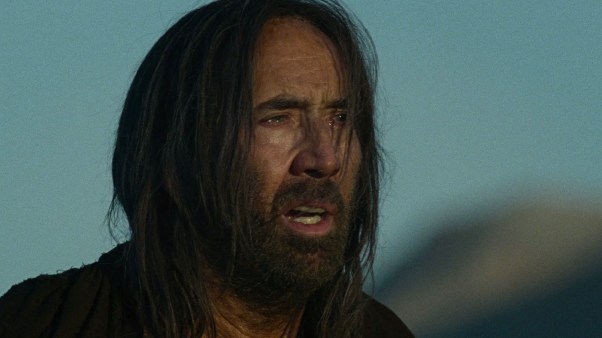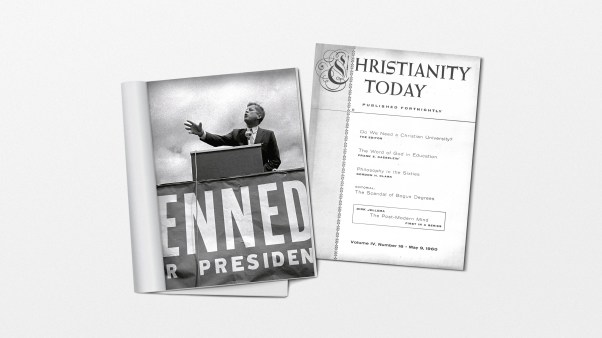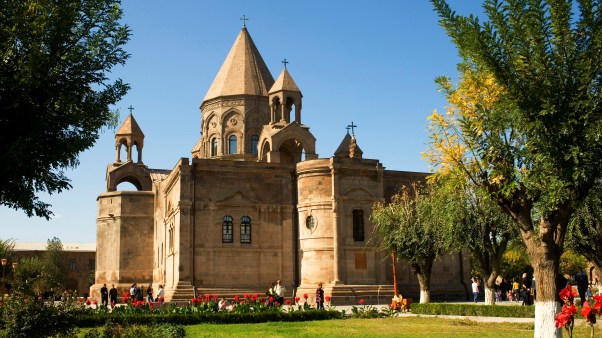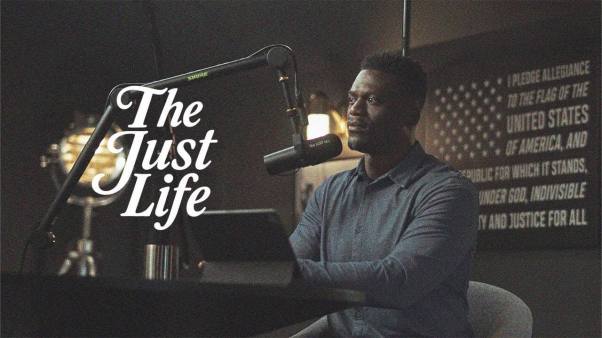Back in the ’80s, they used to have something called career conventions. Toward the end of your schooling, the sports hall would be filled with little stands and a smiling person telling you why a job with the bank, the army, or even as one of those newfangled computer programmers was your very best option. You, as a wide-eyed 16-year-old, were fresh meat.
I sometimes imagine what it would have been like if there’d been a desk in the furthest, shadiest corner of the gymnasium, perhaps with foliage wrapped around the table or desert sand underfoot, where some wizened and mysterious soul may have suggested that you take up the quest of the oldest job of all: a storyteller.
In truth, I wouldn’t have really known what a storyteller was when I was 16, at least not in the way I’m writing about it to you today. It’s become a very popular term these days, encompassing a wide range of disciplines: screenwriting, theatre, movie-making, even advertising. With a modest shrug of the shoulders and a winning grin, the actor can say, “Well, I guess I’m a kind of storyteller,” and we all know what they mean. It gives a sense of an ancient lineage to their art form.
Back at the careers convention of 1987 at Casterton Community College, what I didn’t know about was the kind of storyteller sometimes referred to as a bard, griot, skald, or gleeman—a figure of cultural significance among the tribe, clan, or community. A respected character, sometimes held in awe and even a little fear by the folk gathered around their feet.
The seanchaí (Irish storyteller) could tell stories both long and short, terrible and touching, complex and heartbreakingly simple. They could read the fireside, tavern, or lecture hall they were in, knowing exactly the kind of medicine to prescribe. They weren’t quite religious figures, but they carried a soul-weight nonetheless.
A storyteller reminded the people about who they were, what they’d been through, and where they may be going. This was the pastoral element. This is what came out at moments of collective ceremony: a birth, a wedding, a funeral.
But when things were a little too cozy, or some kind of corruption needed to be named, the storyteller spoke in a prophetic modality. At a moment like this, they may have used satire, riddles, or uncomfortable tales to make their point. They were not benign figures. They were keenly aware of what words were not being spoken in the community. Storytellers have always dwelt in the tension of the pastoral and the prophetic.
Little 16-year-old me knew none of this. I’d been told stories to by my dad and read to by my mum, but I had little idea that telling stories held a wider, historic weight. Maybe I had a dim idea of a bearded old man on a Welsh mountain with a harp or women chanting stories as they yarned, but it was all firmly in the “long time ago” category.
Because this is where I thought myth lived—in the recesses of ancient history. Stories moved me more than I could understand, but I didn’t think there were any modern-day inheritors of the tribal teller. Maybe the ladies who read stories in the library? Perhaps.
But once they’d put the book down, I didn’t see them as connected to the narrative anymore. The traditional charisma of the teller just wasn’t there. I wasn’t quite convinced that Mrs. Philips from Ashburton Library had led a storyteller’s life, which should be akin to being a pirate or running away with the circus. I could detect no gold teeth or rubies in her pocket. She didn’t even smoke a pipe or have an Irish wolfhound at her feet. Maybe she was a mistress of disguise.
There’s an old Aboriginal idea that you find stories within dreams or by going on walkabouts. You sleep by a river for a couple of days and attend to what it wants to say. You track a jaguar till you are close enough to steal a whisker. Then, maybe, you have a story of heft in your pocket. The notion in many indigenous communities was that the earth reveled in myth, thought in myth, even expressed itself in myth. It’s a mistake to assume that myths are entirely constructed for humans by humans.
Yet life and its catalogue of challenges will often lead us humans back to stories. Back then, the only decent way to talk about a personal problem was through a story. Too many “I” statements, and you diminished it, reducing the religious dimensions of the conundrum you faced. You spoke of yourself through the story and, in doing so, became bigger, and your situation more nuanced and poetic.
We find this approach all over the world. Ancient stories ensured the edges of the tent weren’t too firmly nailed down, that there was plenty of room for interpretation, heated opinion, teary emotion, and bellows of laughter—room for mystery. You would never dare to presume to tell a story what it is.
These stories were passed from storyteller to storyteller; no one claimed entire authorship of the tale. Everyone handled the non-changing bones of the narrative and then brought it to life by adding the beating heart of their own imagination. In this way, great myth-telling was a combination of both tradition and innovation.
In medieval times, this was called the matter and the sense of a story. The matter was the bones, and the sense was the wily genius that the storyteller summoned that particular night. If you never improvised, you would have been considered too dry for the vocation, but if you put no weight on tradition, then you would have been a bird careering too near the sun. It was an endless task weighing these two disciplines, which was a significant part of the apprenticeship as a storyteller.
In many ancient cultures, another element was intimately intertwined with the storyteller’s apprenticeship: the rite of passage. This was an experience, usually around the age I was when I was standing in that careers convention, when you took an extended period alone to fast in a wild place. Maybe a mountaintop, out on the ice, some forested glade. You went to meet God. You went to be shaken. You went to formally announce the end of childhood. This complex process is essentially triadic, often referred to as severance, threshold, and return.
You severed from friends, family, even your usual ideas about yourself, and headed into the threshold time. Other words for that could include the liminal, the contemplative, the thin. Heaven and earth may have gotten a little closer during that period. Maybe on the last night of your excursion, you would stay up, praying for a vision. When you returned, you were brought happily and weepily back into the bosom of your community.
The vision you received was a tender shoot, a subtle thing that required your attention. In some way, your particular revelation would grow into something that ultimately benefited the whole clan. And guess what, the way that vision was often best articulated was in the shape of a story—told orally to the delighted community. If it was especially precious, it would be remembered, it would be danced, it would be repeated, it would be puzzled over, and maybe, over many generations, it would become a myth. There’s really no quick route with this.
Somehow God decided to curate enough mayhem in my own young life that I had no choice but to remember the stories I loved as a child and divine deeper meaning from them. By my early 30s, I found myself living in a tent on a succession of English hills, seeking to be an apprentice to stories in the ecologically savvy way I am describing here.
For four years, the hymn of rain on canvas pattered alongside as I slowly learned many antique fairy tales, many almost forgotten or barely known at all. I also trained in wilderness rites of passage, and the two have gradually entwined rather delightfully. I’ve now written 18 books and have taught all over America, England, and Europe. Approaching my 50th birthday, I went on a 101-day vigil in an English forest. On the last night, I fell into an encounter with Christ that is still circulating in my heart to this day.
The motif of leaving the familiar, encountering the peril and wonder of the numinous, and returning with a growing wisdom is one of the most profound signposts we have to being a real human being. Everyone is carrying this story of their own life, sometimes clumsily, but still gripping. Myth can unfold your wingspan a little, taking your individual life experience and giving it a wider panorama. Stories walk us home. A storyteller blows new breath on old embers.
The God of the Christians was a scandal from start to finish. He was born a fugitive, died an outlaw, rubbed almost everyone the wrong way, was hammered to a cross to pay for it, then had the audacity to come back. How did this figure choose to communicate in the main? Through stories. If we want to be like our teacher, we could try doing the same. Pastoral and prophetic, the sense and the matter, tradition and innovation—I have indeed been scattering breadcrumbs all the way through this essay.
So here we are, back at the careers convention. You’ve tried out a bunch of stalls, are holding a ton of pamphlets, and are maybe feeling a little overtired. Look toward the far end of the hall, back in the shade a bit. Most people have sloped off by now. There I am. Maybe there’s a trail of woodsmoke and some vines crawling around the desk. Possibly a raven quizzically checking you out.
I offer you the invitation that was resolutely not offered to me at 16: Maybe you’re a storyteller. Sleep on it. Dream on it. Wonder on it. Pray on it. Turn off your screens and go on a walkabout. We have a God who thinks in myth, who revels in story, who delights in the truth of fable.
Maybe your quest has just arrived.
Martin Shaw is a writer, mythographer, and Christian thinker who has authored many books, including the upcoming Liturgies of the Wild: Myths that Make Us. He founded the oral tradition and mythic life courses at Stanford University and is director of the Westcountry School of Myth in the UK. Subscribe to his Substack, House of Beasts & Vines, and his YouTube channel, Jawbone.












